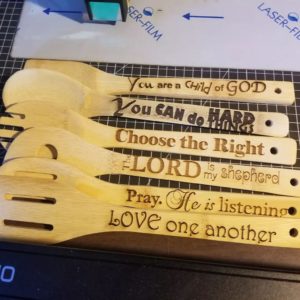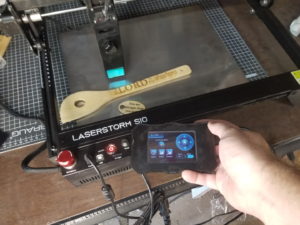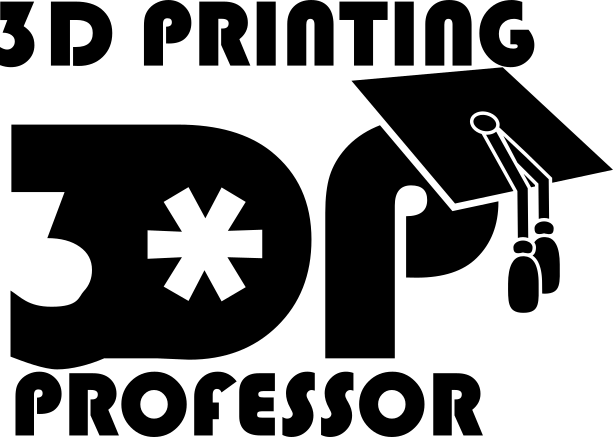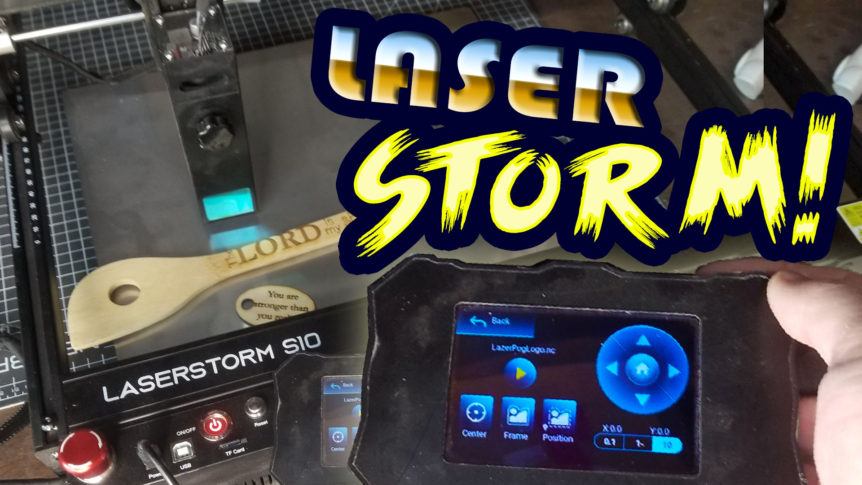I realized after editing that I really should have leaned into the awesomeness of “LaserSTORM” name in the video. So I wanted to make up for that in the thumbnail. A bit of a disjoint from the vibe of the video, but that’s the thumbnail game.
You know how when your daughter wants to record herself singing with her Grandmother providing accompaniment, so you remove your fancy Zoom H4N from your recording rig, and then when you’re done you forget to switch back to the external mics in the settings? Happens to everyone, right? That’s why this video’s sound is a little more “roomy” than my usual. I don’t recommend listening to this video with headphones. That said, the onboard mics for the Zoom did a pretty good job catching my voice 2 feet from my sound hole.
As impressed as I was with the Pergear LaserStorm S10, it does make me wonder about a few things about diode lasers in general. Like:
- If this technology (especially diode lasers) is so similar to 3D printers in a lot of ways, why is it so much more expensive?
- While laser cutters have been around since before 3D printers (my first 3D printer was actually built from a laser cut frame) why is the software for them so much more primitive?
Let’s start with the cost. There’s a lot of reasons why someone could argue this machine should be cheaper. For instance, these diode lasers are not CO2 filled laser tubes. Also, this UI isn’t that much more impressive than you could find on many “pro” grade 3D printers. And yet the LOTMAXX Shark 2 literally slapped a laser on a 3D printer for nearly half the price.
But, there’s some things we’re not considering here.
 First of all, we’re comparing apples and… well not oranges. More like apples and pears. Not as different as an orange, but not actually the same. For instance, that functional volume I mentioned, while this thing has no Z-Axis to speak of, you can’t really say it’s 400×400 build space is comparable to a three dimensional build volume at all. There’s a reason that as 3D printers go up in volume that they go up exponentially in price. Being stable at large volumes is tricky and gets more tricky the further you want to go. So the fact that we’re spanning such a huge distance could have something to do with it.
First of all, we’re comparing apples and… well not oranges. More like apples and pears. Not as different as an orange, but not actually the same. For instance, that functional volume I mentioned, while this thing has no Z-Axis to speak of, you can’t really say it’s 400×400 build space is comparable to a three dimensional build volume at all. There’s a reason that as 3D printers go up in volume that they go up exponentially in price. Being stable at large volumes is tricky and gets more tricky the further you want to go. So the fact that we’re spanning such a huge distance could have something to do with it.
Also, the laser industry and the 3d printing industry don’t share notes with each other. They definitely should, but you can see what happens when the 3D printer group tries to slap a laser on their 3D printer knowledge in the afore mentioned Shark V2. The result is a lot of janky jank. The Pergear LaserStorm S10 definitely feels a lot better developed than the Shark V2 did.
However, it’s not that well developed. Definitely not as well developed as it should be considering the age of this technology. Like I said, my first 3D printer had a laser cut frame, because before 3D printing, laser cutting and CNC routing was the way to get something made rapidly, But then they used those tools to make 3D printers, and suddenly everyone forgot about laser cutting and CNC. The RepRap project with it’s open development and endless potential literally made everyone forget about laser cutting. It opened up industrial level making to a market that it had never considered before and showed the world what could be done. Now, 10 years later, with with new laser diodes really showing what’s capable with this technology, it seems like people are starting to remember what laser engraving was able to do and they’re returning to apply the lessons of 3D printing to the world of laser engravers.
And, talking about cost, 3D printers did experience a race to the bottom a while back that is, let’s be totally honest here, skewing the perception of what a tool like this could and should cost. That laser cut 3D printer I started with was over $1000 at the time. There was a perception that parts alone would cost you $800 for one of these machines. Then the Chinese market came along and said “hold my Sake” and now we’re getting $100 Ender 3s. That has had some ramifications on both the market and the perception of what these things should cost, for better or worse. Nowadays, for what I would have paid for my first 3D printer, you can get professional grade printing with the Bambu X1 Carbon, which I argue is well worth it. So maybe 3D printers should never have been this cheap.
 Now, while 3D printing and laser cutters are, like I said, like apples and pears, the design process for making a 3D shape with a laser cutter is a completely different world. Sure, if all you want to do is etch an uplifting saying on a a set of bamboo utensils you got for $8 at the department store, you can’t do that with a 3D printer. But if you want to make, say, an enclosure for a project, you should be able to do that with a laser cutter. But the process involves:
Now, while 3D printing and laser cutters are, like I said, like apples and pears, the design process for making a 3D shape with a laser cutter is a completely different world. Sure, if all you want to do is etch an uplifting saying on a a set of bamboo utensils you got for $8 at the department store, you can’t do that with a 3D printer. But if you want to make, say, an enclosure for a project, you should be able to do that with a laser cutter. But the process involves:
- Breaking your shape up into various representational flat shapes that it’s composed of
- Adding tabs that are the thickness of your material
- Coordinating the tabs between different surfaces so they interlock properly
- Designing the tolerance of the gaps between the tabs and taking into account the thickness of the cutting tool
- Adding whatever gripping mechanism to that that you want (like screw holders) and coordinating the different pieces so they interlock as well.
And near as I know there’s no software that will allow you to build the shape in 3D and then figure all that stuff out for you. Pretty much all of those steps need to be understood by the designer and done in their head. No wonder most laser cut projects are simple boxes. Where as 3D printing, by it’s very nature, doesn’t care how the shape was generated, whether it was an asset for a video game or designed in SolidWorks. It can break it down and make it into something. And maybe this is another reason for 3D printing’s meteoric rise. But an app like this for cutters would be killer!
There’s a lot that laser cutters can do that 3D printing can’t. But it’s still such a manual process, requiring a high level of understanding from the designer and the operator, that it becomes a hinderance to the adoption of the technology. And maybe that lack of economy of scale is another reason why this technology is disproportionally more expensive.
Which is all a long-winded way of saying if the Pergear LaserStorm S10 were $300 machine, it would probably sell much better. $350 tops.

